Growing Oranges Indoors might seem like a tropical dream reserved for sun-drenched orchards, but I’m here to tell you that bringing the citrusy sunshine into your home is absolutely achievable! Forget those expensive, store-bought oranges that lack that homegrown zest. Imagine plucking a perfectly ripe, juicy orange straight from a tree you nurtured yourself, right in your living room. Sounds amazing, right?
Citrus cultivation, including oranges, boasts a rich history, dating back thousands of years in Asia. They were prized for their flavor, medicinal properties, and even symbolic significance. Bringing that tradition into our homes allows us to connect with that history and experience the joy of cultivating something truly special.
But why bother with the effort of growing oranges indoors? Well, for starters, it’s incredibly rewarding! Beyond the satisfaction of nurturing a plant and harvesting its fruit, it’s a fantastic way to add a touch of greenery and a burst of fresh fragrance to your indoor space. Plus, in many climates, outdoor orange growing simply isn’t an option. This DIY guide will equip you with the knowledge and simple tricks to overcome those challenges, ensuring you can enjoy the taste of homegrown oranges no matter where you live. I’m excited to share these tips and tricks with you, so let’s get started!
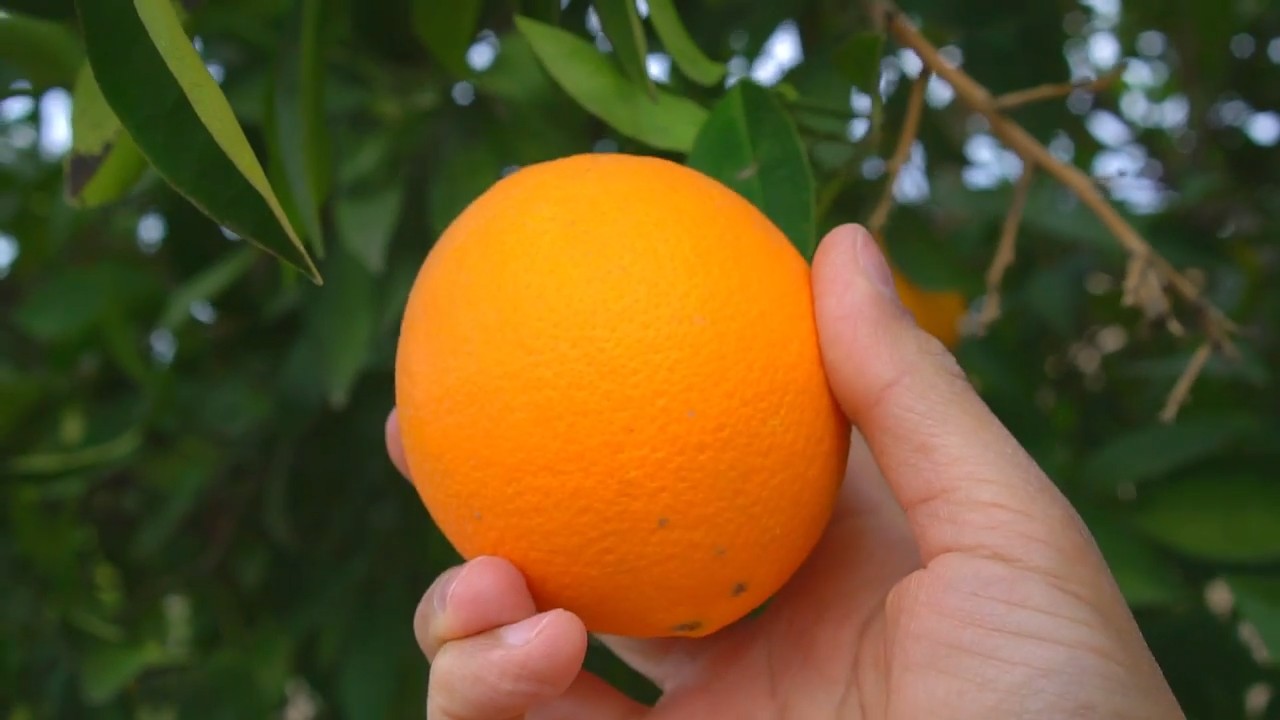
Growing Oranges Yourself: Your Guide for Indoor Cultivation
Hey everyone! Are you also tired of expensive oranges from the supermarket that have hardly any flavor? Me too! That’s why I decided to try my luck with growing oranges at home. And you know what? It’s not as hard as you might think! With a little patience and the right tips, you too can soon be harvesting your own juicy oranges. Let’s dive into the world of indoor orange cultivation together!
What You Need for Indoor Orange Cultivation
Before we get started, here is a list of everything you’ll need:
- Orange seeds: Preferably from organic oranges, as these are often untreated.
- Starter pots: Small pots or seed trays for germination.
- Seed-starting mix: Special soil for starting seedlings that is low in nutrients and loose.
- A larger pot: A pot with at least a 30 cm (12-inch) diameter for later transplanting.
- Citrus potting mix: Special soil for citrus plants that is well-draining and slightly acidic.
- Fertilizer for citrus plants: Liquid or slow-release fertilizer specifically tailored to the needs of citrus plants.
- Spray bottle: For misting the leaves.
- Watering can: For watering the plant.
- Grow light (optional): If your location does not provide enough sunlight.
- Sharp knife or scalpel: For scoring the seeds (optional, but recommended).
- Plastic bag or plastic wrap: To create a humid climate for germination.
The Preparation: Harvesting and Preparing Seeds
Preparing the orange seeds is an important step for successful germination. Here’s how I do it:
- Harvest the seeds: Cut open a ripe, organic orange and remove the seeds. Choose the plumpest and healthiest-looking seeds.
- Clean: Rinse the seeds under running water to remove any remaining fruit pulp. This prevents mold from forming.
- Scoring (optional): With a sharp knife or scalpel, you can carefully nick the hard shell of the seeds. This allows water to penetrate more easily and speeds up germination. Be very careful not to damage the seed itself!
- Soak: Place the seeds in a glass of lukewarm water for 24 hours. This hydrates the seeds and prepares them for germination.
Germination: How to Get the Seeds to Sprout
Now let’s get down to it! Germination is the most exciting part, because this is where you see if your preparation was successful.
- Prepare the starter pots: Fill the starter pots with seed-starting mix. Lightly moisten the soil.
- Sow the seeds: Place 2-3 seeds in each pot, about 1-2 cm (0.5-1 inch) deep. This increases the likelihood that at least one seed will germinate.
- Retain moisture: Spray the soil with water and cover the pots with a plastic bag or plastic wrap. This creates a humid environment that promotes germination.
- Choose a location: Place the pots in a warm, bright place, but not in direct sunlight. A temperature of 20-25°C (68-77°F) is ideal.
- Be patient: Germination can take 2-4 weeks. Ventilate the pots regularly to prevent mold. Keep the soil moist, but not wet.
Rearing: From Seedling to a Small Orange Tree
Once the first small seedlings sprout from the soil, the actual rearing begins.
- Remove the plastic bag: As soon as the seedlings have germinated, remove the plastic bag or plastic wrap.
- Bright location: Move the pots to a brighter location, but continue to avoid direct sunlight for now.
- Water regularly: Water the seedlings regularly, but avoid waterlogging. The soil should always be slightly moist.
- Fertilize (optional): After about 4-6 weeks, you can start fertilizing. Use a special fertilizer for citrus plants and follow the dosage instructions.
- Repotting: When the seedlings are large enough (about 10-15 cm / 4-6 inches high) and have developed a good root system, you can transplant them into larger pots. Use citrus potting mix for this.
Care: How to Keep Your Orange Tree Healthy and Happy
Proper care is crucial for the growth and health of your indoor orange tree.
- Location: Orange trees love light! Place your plant in the brightest possible location. A south-facing window is ideal. If natural light is insufficient, you can use a grow light.
- Watering: Water your orange tree regularly, but avoid waterlogging. The soil should always be slightly moist. In winter, when the plant is less active, reduce the amount of water.
- Fertilizing: During the growing season (spring and summer), fertilize your orange tree regularly with a special fertilizer for citrus plants. Follow the dosage instructions. You should stop fertilizing in the winter.
- Humidity: Orange trees prefer high humidity. Spray the leaves regularly with water or place the plant on a saucer with water and pebbles.
- Pruning: Prune your orange tree regularly to keep it in shape and to encourage fruit production. Remove dead or diseased branches.
- Overwintering: In winter, you should move your orange tree to a cool, bright location. A temperature of 10-15°C (50-59°F) is ideal. Reduce the amount of water and stop fertilizing.
- Pests: Watch out for pests like aphids, spider mites, or scale insects. If infested, you can treat the plant with a special insecticide or use natural remedies like neem oil.
Patience is Required: When Will the First Oranges Appear?
Here comes the bad news: it can take several years for your indoor orange tree to bear fruit for the first time. It usually takes 3-6 years, sometimes even longer. But the wait is worth it! If you do everything right, you will be rewarded with your own juicy oranges.
Important: Oranges grown from seed do not always bear fruit that tastes the same as the parent plant. There can be variations in the taste and size of the fruit. To ensure you get oranges with the desired characteristics, you can also buy a grafted orange tree.
Common Problems and Solutions
Problems can also arise with indoor orange cultivation. Here are some of the most common issues and how you can solve them:
No blossoms: If your orange tree is not producing blossoms, it could be due to too little light, not enough fertilizer, or improper pruning. Move the plant to a brighter location…
Yellow leaves: Yellow leaves can have various causes, such as nutrient deficiency, waterlogging, or too little light. Check the soil moisture and fertilize the plant if necessary. Make sure the plant is getting enough light.
Leaf drop: Leaf drop can be caused by stress, too little light, or air that is too dry. Move the plant to a brighter location and increase the humidity.
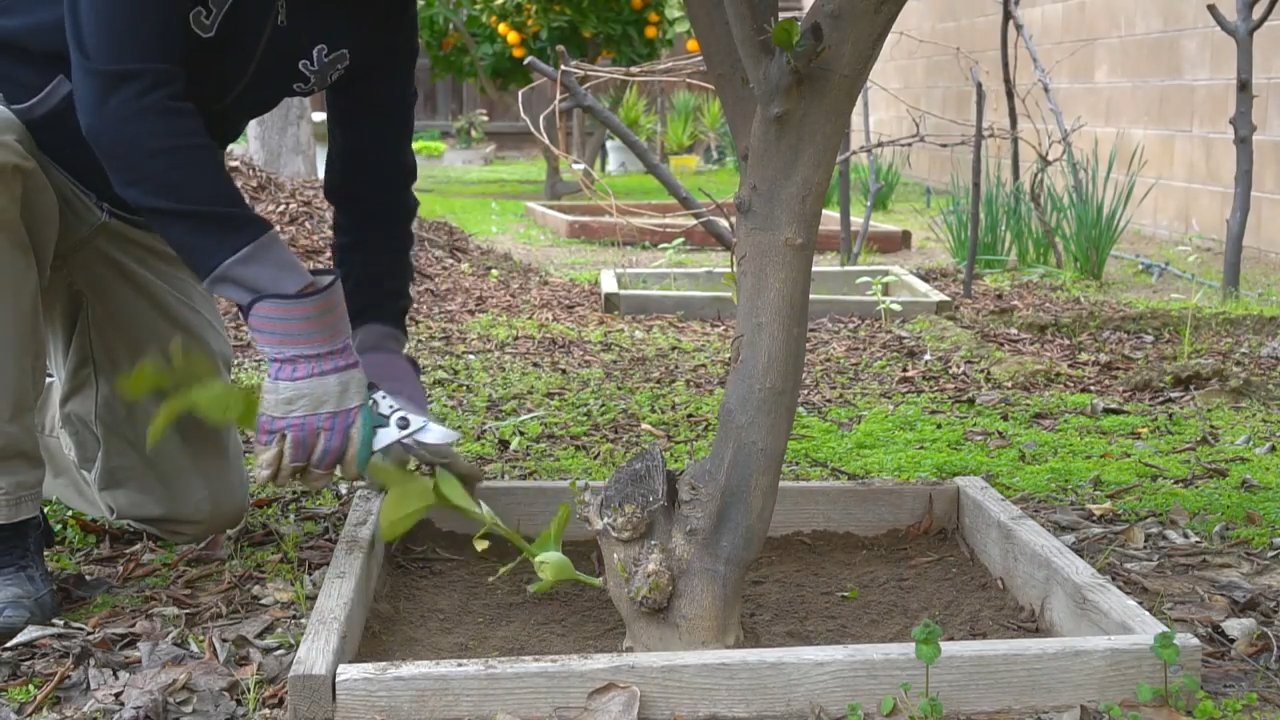
Conclusion
So, there you have it! Growing oranges indoors might seem like a tropical dream reserved for sun-drenched groves, but with a little know-how and dedication, you can absolutely cultivate your own miniature citrus paradise right within your home. This DIY trick isn’t just about having fresh oranges at your fingertips; it’s about the joy of nurturing life, the satisfaction of watching a tiny seed transform into a fruit-bearing tree, and the unique ambiance a vibrant, fragrant citrus plant brings to your living space.
Think about it: no more relying solely on grocery store oranges, often shipped from far away and lacking that peak-season freshness. Imagine plucking a sun-ripened orange, bursting with flavor, straight from your own indoor tree. The aroma alone is enough to brighten any day!
But the benefits extend beyond the tangible. The process of growing oranges indoors is incredibly therapeutic. It connects you to nature, provides a calming routine, and offers a rewarding sense of accomplishment as you witness your plant thrive under your care. Plus, it’s a fantastic conversation starter!
Don’t be afraid to experiment with different varieties of dwarf orange trees. Consider ‘Calamondin’ for its tart, marmalade-ready fruit, or ‘Trovita’ for its sweet, juicy segments. You can also explore different potting mixes to find what works best for your specific environment. Some growers swear by a blend of peat moss, perlite, and vermiculite, while others prefer a more organic mix with compost and aged manure. The key is to ensure good drainage and aeration.
And speaking of variations, why not try grafting a different citrus variety onto your indoor orange tree? This allows you to enjoy multiple types of fruit from a single plant! It’s a more advanced technique, but the results can be truly spectacular. You could even try your hand at creating your own citrus hybrids!
We understand that growing oranges indoors can seem daunting at first, but we encourage you to take the plunge. Start small, be patient, and don’t be afraid to learn from your mistakes. The rewards are well worth the effort.
We are confident that with the right care and attention, you can successfully grow oranges indoors. This DIY project is not only rewarding but also adds a touch of nature to your home.
Now, it’s your turn! We’re eager to hear about your experiences. Have you tried growing oranges indoors before? What challenges did you face, and what tips would you share with fellow growers? Share your photos, stories, and questions in the comments below. Let’s create a community of indoor citrus enthusiasts and learn from each other’s successes and failures. Let’s make growing oranges indoors a shared passion!
Frequently Asked Questions (FAQ)
1. What type of orange tree is best for growing indoors?
The best orange trees for indoor growing are dwarf varieties specifically bred for container gardening. Some popular choices include:
* **Calamondin Orange:** This is a very popular choice due to its compact size, prolific fruiting, and tolerance of indoor conditions. The fruit is tart and best used in marmalades or other cooked preparations.
* **Trovita Orange:** A sweet and juicy orange that is relatively easy to grow indoors. It’s known for its good flavor and relatively small size.
* **Valencia Orange:** While typically a larger tree, some dwarf Valencia varieties are available and can be successfully grown indoors with proper pruning.
* **Navel Orange:** Similar to Valencia, look for dwarf or semi-dwarf Navel orange trees for indoor cultivation.
When selecting a tree, make sure it is grafted onto a dwarfing rootstock. This will help control its size and make it more manageable for indoor growing.
2. How much sunlight do indoor orange trees need?
Orange trees are sun-loving plants and require at least 6-8 hours of direct sunlight per day to thrive and produce fruit. If you don’t have a south-facing window that provides sufficient sunlight, you’ll need to supplement with artificial grow lights. Full-spectrum LED grow lights are an excellent option, as they provide the necessary light spectrum for photosynthesis. Position the grow lights about 12-18 inches above the tree and keep them on for 12-16 hours per day.
3. What kind of soil should I use for my indoor orange tree?
Orange trees need well-draining soil that is rich in organic matter. A good potting mix for indoor orange trees should consist of:
* **Peat moss or coco coir:** These materials help retain moisture and provide aeration.
* **Perlite or vermiculite:** These improve drainage and prevent the soil from becoming compacted.
* **Compost or aged manure:** These provide essential nutrients for healthy growth.
Avoid using garden soil, as it can be too heavy and may contain pests or diseases. You can also purchase commercially available citrus potting mixes, which are specifically formulated for citrus trees.
4. How often should I water my indoor orange tree?
Water your orange tree when the top inch of soil feels dry to the touch. Water thoroughly until water drains out of the bottom of the pot. Avoid overwatering, as this can lead to root rot. During the winter months, when the tree is not actively growing, you may need to water less frequently.
5. How often should I fertilize my indoor orange tree?
Orange trees are heavy feeders and require regular fertilization to produce healthy growth and abundant fruit. Fertilize your tree every 2-4 weeks during the growing season (spring and summer) with a balanced citrus fertilizer. Follow the instructions on the fertilizer label carefully. Reduce fertilization during the winter months.
6. How do I pollinate my indoor orange tree?
Indoor orange trees may need help with pollination, as there are no bees or other insects to do the job. You can hand-pollinate your tree by using a small paintbrush to transfer pollen from one flower to another. Gently brush the pollen from the stamen (the male part of the flower) onto the pistil (the femal
So, there you have it! Growing oranges indoors might seem like a tropical dream reserved for sun-drenched groves, but with a little know-how and dedication, you can absolutely cultivate your own miniature citrus paradise right within your home. This DIY trick isn’t just about having fresh oranges at your fingertips; it’s about the joy of nurturing life, the satisfaction of watching a tiny seed transform into a fruit-bearing tree, and the unique ambiance a vibrant, fragrant citrus plant brings to your living space.
Think about it: no more relying solely on grocery store oranges, often shipped from far away and lacking that peak-season freshness. Imagine plucking a sun-ripened orange, bursting with flavor, straight from your own indoor tree. The aroma alone is enough to brighten any day!
But the benefits extend beyond the tangible. The process of growing oranges indoors is incredibly therapeutic. It connects you to nature, provides a calming routine, and offers a rewarding sense of accomplishment as you witness your plant thrive under your care. Plus, it’s a fantastic conversation starter!
Don’t be afraid to experiment with different varieties of dwarf orange trees. Consider ‘Calamondin’ for its tart, marmalade-ready fruit, or ‘Trovita’ for its sweet, juicy segments. You can also explore different potting mixes to find what works best for your specific environment. Some growers swear by a blend of peat moss, perlite, and vermiculite, while others prefer a more organic mix with compost and aged manure. The key is to ensure good drainage and aeration.
And speaking of variations, why not try grafting a different citrus variety onto your indoor orange tree? This allows you to enjoy multiple types of fruit from a single plant! It’s a more advanced technique, but the results can be truly spectacular. You could even try your hand at creating your own citrus hybrids!
We understand that growing oranges indoors can seem daunting at first, but we encourage you to take the plunge. Start small, be patient, and don’t be afraid to learn from your mistakes. The rewards are well worth the effort.
We are confident that with the right care and attention, you can successfully grow oranges indoors. This DIY project is not only rewarding but also adds a touch of nature to your home.
Now, it’s your turn! We’re eager to hear about your experiences. Have you tried growing oranges indoors before? What challenges did you face, and what tips would you share with fellow growers? Share your photos, stories, and questions in the comments below. Let’s create a community of indoor citrus enthusiasts and learn from each other’s successes and failures. Let’s make growing oranges indoors a shared passion!
Frequently Asked Questions (FAQ)
1. What type of orange tree is best for growing indoors?
The best orange trees for indoor growing are dwarf varieties specifically bred for container gardening. Some popular choices include:
* **Calamondin Orange:** This is a very popular choice due to its compact size, prolific fruiting, and tolerance of indoor conditions. The fruit is tart and best used in marmalades or other cooked preparations.
* **Trovita Orange:** A sweet and juicy orange that is relatively easy to grow indoors. It’s known for its good flavor and relatively small size.
* **Valencia Orange:** While typically a larger tree, some dwarf Valencia varieties are available and can be successfully grown indoors with proper pruning.
* **Navel Orange:** Similar to Valencia, look for dwarf or semi-dwarf Navel orange trees for indoor cultivation.
When selecting a tree, make sure it is grafted onto a dwarfing rootstock. This will help control its size and make it more manageable for indoor growing.
2. How much sunlight do indoor orange trees need?
Orange trees are sun-loving plants and require at least 6-8 hours of direct sunlight per day to thrive and produce fruit. If you don’t have a south-facing window that provides sufficient sunlight, you’ll need to supplement with artificial grow lights. Full-spectrum LED grow lights are an excellent option, as they provide the necessary light spectrum for photosynthesis. Position the grow lights about 12-18 inches above the tree and keep them on for 12-16 hours per day.
3. What kind of soil should I use for my indoor orange tree?
Orange trees need well-draining soil that is rich in organic matter. A good potting mix for indoor orange trees should consist of:
* **Peat moss or coco coir:** These materials help retain moisture and provide aeration.
* **Perlite or vermiculite:** These improve drainage and prevent the soil from becoming compacted.
* **Compost or aged manure:** These provide essential nutrients for healthy growth.
Avoid using garden soil, as it can be too heavy and may contain pests or diseases. You can also purchase commercially available citrus potting mixes, which are specifically formulated for citrus trees.
4. How often should I water my indoor orange tree?
Water your orange tree when the top inch of soil feels dry to the touch. Water thoroughly until water drains out of the bottom of the pot. Avoid overwatering, as this can lead to root rot. During the winter months, when the tree is not actively growing, you may need to water less frequently.
5. How often should I fertilize my indoor orange tree?
Orange trees are heavy feeders and require regular fertilization to produce healthy growth and abundant fruit. Fertilize your tree every 2-4 weeks during the growing season (spring and summer) with a balanced citrus fertilizer. Follow the instructions on the fertilizer label carefully. Reduce fertilization during the winter months.
6. How do I pollinate my indoor orange tree?
Indoor orange trees may need help with pollination, as there are no bees or other insects to do the job. You can hand-pollinate your tree by using a small paintbrush to transfer pollen from one flower to another. Gently brush the pollen from the stamen (the male part of the flower) onto the pistil (the female part of the flower). Repeat this process for all the flowers on your tree.
7. What are some common pests and diseases that affect indoor orange trees?
Some common pests that can affect indoor orange trees include:
* **Aphids:** Small, sap-sucking insects that can cause distorted growth.
* **Spider mites:** Tiny mites that create webs on the leaves and cause them to turn yellow.
* **Scale:** Small, armored insects that attach themselves to the stems and leaves.
* **Mealybugs:** White, cottony insects that suck sap from the plant.
Common diseases include root rot (caused by overwatering) and fungal infections.
To prevent pests and diseases, inspect your tree regularly and take action promptly if you notice any problems. You can treat pests with insecticidal soap or neem oil. Prevent root rot by ensuring good drainage and avoiding overwatering.
8. How do I prune my indoor orange tree?
Pruning is essential for maintaining the shape and size of your indoor orange tree. Prune your tree in late winter or early spring, before new growth begins. Remove any dead, damaged, or crossing branches. You can also prune to shape the tree and encourage bushier growth.
9. My orange tree is dropping leaves. What could be the problem?
Leaf drop can be caused by several factors, including:
* **Overwatering or underwatering:** Check the soil moisture and adjust your watering accordingly.
* **Insufficient light:** Make sure your tree is getting enough sunlight or supplement with grow lights.
* **Nutrient deficiency:** Fertilize your tree regularly with a balanced citrus fertilizer.
* **Sudden changes in temperature or humidity:** Orange trees prefer stable conditions.
* **Pest infestation:** Inspect your tree for pests and treat accordingly.
10. How long does it take for an indoor orange tree to produce fruit?
It can take several years for an indoor orange tree to produce fruit. Grafted trees typically fruit sooner than trees grown from seed. Be patient and continue to provide proper care, and eventually, you will be rewarded with delicious, homegrown oranges.

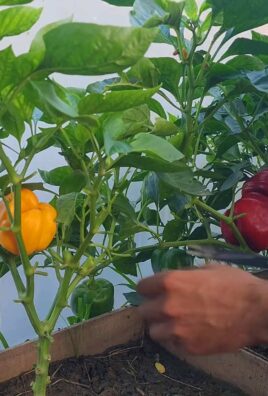
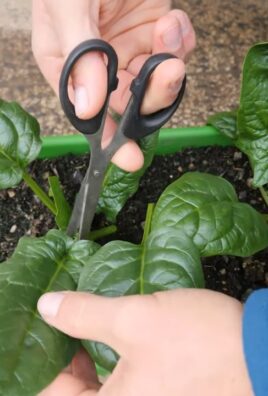
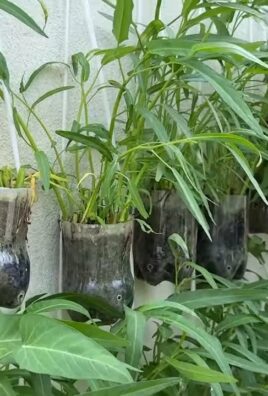
Leave a Comment